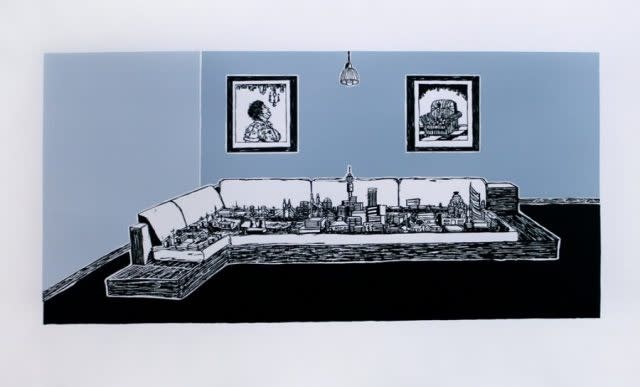
Four lifeless bodies lie on the surface. One is on all fours, either going down or trying to get up, a hint of resurrection perhaps. The other two are being swallowed down as only the shoulders and heads remain perched above the surface. The surface itself is blue and therefore could be a body of water. Four signposts in the picture seem strategically planted. Near one of the bodies is a lady’s handbag. A healthy giant baobab tree stands in the distance against a dark backdrop. There is something innately disturbing about the piece.
These are scenes in Senzo Shabangu’s Get Over It, one of his landscape paintings. For the artist, landscape painting is an artform he employs to express the dynamics of human experiences in a way that allows him to capture detail. The work is his reconstruction of the massacre that happened at Strijdom Square in Pretoria on 15 November 1988. On that fateful day, a man named Barend ‘Wit Wolf’ Strydom went on a shooting spree resulting in the massacre of seven innocent black people, with sixteen others injured.1 Strydom is said to have meditated and prayed for God’s guidance prior to committing the horrific act.
The Truth and Reconciliation Commission (TRC) granted him amnesty in 1994 on the grounds that his attack was politically motivated.2 Strijdom Square was named after J.G. Strijdom, a prime minister in apartheid South Africa. On 9 August 2006, the 50th anniversary of the Women’s Anti-Pass March of 1956 the place was renamed Lilian Ngoyi Square in honour of one of the nation’s leading anti-apartheid activists and fighters.3 Together with Helen Joseph, Albertina Sisulu and Sophia Williams-De Bruyn, Ngoyi led 20 000 women of all races to the Union Buildings to demand that the pass laws be abolished.4


